DOG TRAINING OFFERED IN-PERSON AND ONLINEOur dog training services are delivered in almost any format that meets your needs. We have GROUP CLASSES at our indoor and outdoor facilities on our farm, ONLINE LIVE STREAMING classes, and SELF-PACED VIDEO-BASED training through our Online Dog Training Course. Our PRIVATE TRAININGS can be done in-home, outside, in public dog-friendly locations, at our facility on our farm, online via phone or video conferencing and through email. |
Most dog owners will need to board their dogs at some point. Some need to board their dogs frequently. For some, it is a rare need. Whether it is due to travel for work, vacation or some other reason, we dog owners need to find others to care for our dogs who will meet our expectations for care and concern of our beloved pets.
That care could be in-home pet sitting, boarding at someone else's home, or a stay at a boarding facility.
We provide boarding as part of our business. Our style of boarding is often called home-style or family-style boarding. It started because we had clients who would not use a traditional boarding facility for their dogs, and needed an option they trusted with their dogs. Over the years, we have further developed our boarding based on our expectations of what we would want if we were boarding our own dogs.
Since our personal and professional lives revolve around dogs, we spend a lot more time thinking about dogs than most people do. And we have very high expectations for how our own dogs are cared for. So, we wanted to lay out in detail our basic premise: How would we want someone else to care for our own dogs?
This is the premise we use when determining how to run our boarding (and everything else we do) so the following list will help you understand how we do things.
You should use this list when considering anyone to take care of your dog when you are not able to so. Whether it is:
- a pet sitter coming to your home;
- a family member, friend or neighbor;
- a business like ours that offers home-style boarding;
- or, a facility-style boarding operation.
A lot of things on this list may be of less concern to you, and that is fine, but we wanted to be thorough because everything on this list is exactly what we think about when others take care of our dogs, and the standards we use for our boarding services.
Most, if not all, places you look for boarding might not do everything on this list or have even considered some of the things on this list. But you can use this list to help educate others about your expectations for taking care of your dog. Just because you have a family member take care of your dog and you trust them implicitly, they may not think about a lot of things on our list. So by educating them, you are helping them provide care that meets your expectations.
Don't let the length of this article scare you, as we want to be thorough. But to make it easier for you, at the end of this article are several tools created from this article that you can download to help you find others to take care of your dog and to educate them about your expectations for the level of care you want.
Maggie, Scout and Sadie enjoying some time on the deck.
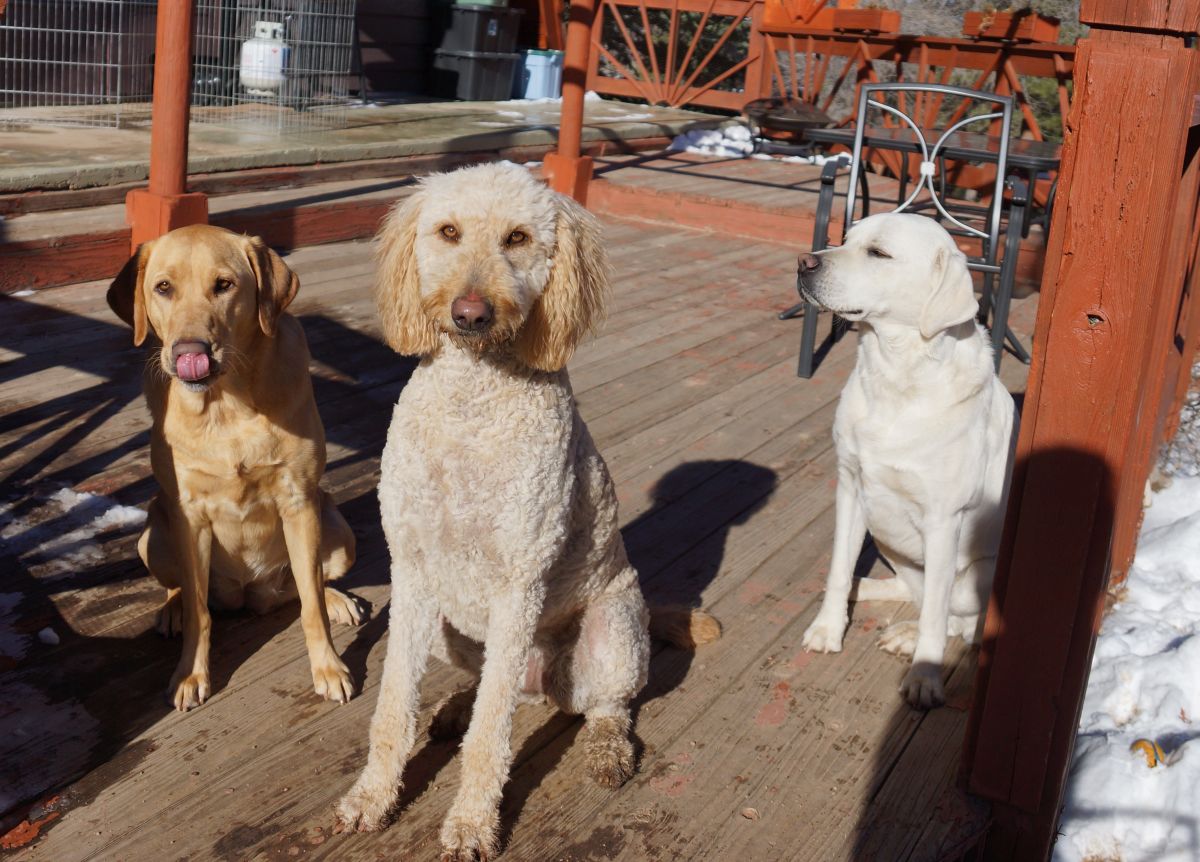
Table of Contents
Please click the link to be taken to that section.
Facility Considerations
- Visit New Spaces Ahead of Time
- Facility Type
- Size, outdoor access and number of dogs
- Ability to separate sick dogs
- Sleeping/Confinement Area
- Activity level at location
- Climate Control and Air Quality
- Surfaces
- Facility Hazards
- Escape Risk and Containment
- Cleanliness
- Management of Personal Items
- Other Health and Safety Related Items
Staffing
- Training and Experience
- Dog to Staff Ratio
- First Aid and Health Services
- Monitoring
Boarding Facility Criteria, Registration and Intake/Drop Off
- Boarding Service Level
- Registration Information
- Intake/Drop Off
Routines
- Play
- Feeding
- Exercise
- Owner/Boarding Facility Contact
Costs and Other Items
- Included costs vs extra costs
- Licensing and Insurance
- Prior Medical Incidences
- How does your dog feel about his stay?
Download these tools to help you find boarding for your dog
- Boarding Log Template
- Boarding Facility Checklist
Facility Considerations
Visit New Spaces Ahead of Time
If you are not already very familiar with a place (or the people there), plan ahead and make sure you schedule a visit to a boarding location. Never consider a place without doing this first.
Facility Type
What to look for:
Choices can be:
- a pet sitter in your own home;
- a home with a family member, friend or neighbor;
- a home that you found through an online service that links you up with another to look after your dog;
- a professional that operates boarding for a few dogs in a home-style environment;
- a facility that operates boarding for many dogs in commercial office/warehouse environment.
What we do:
We are professionals who operate boarding for a few dogs at a time in a home-style environment. Some dogs do not do well in larger boarding facilities. Home-style environments like us or homes of people typically offer more one-on-one care and because there are fewer dogs, there is less chaos and barking, which means much less stress.
Size, outdoor access and number of dogs
What to look for:
- How big is the space in square footage?
- How many rooms are included?
- How many dogs are handled at any one time?
- Is there enough space for your dog to move around during play and when kenneled?
- Is it easy to separate dogs as needed while still giving them enough space if certain dogs do not mix well?
- How big is the outdoor space that is secured where they can freely run around?
What we do:
We typically board two to three dogs, but that can get a few more on top of that same day on overlap (one is coming before another leaves).
Our space includes a large great room that measures approximately 36 x 21, kennel space that measures approximately 14 x 13, a kitchen space that measures approximately 9 x 9, office space that measures approximately 20 x 12, and another small space between our boarding area and our private home space that is approximately 8 x 10.
Our outdoor space is approximately 1/2 acre. Our boarders typically have access to all of this space. In the summer, they can go in and out as they want as we leave the door open outside.
When it comes to space, consider that too small of a space can be more stressful for multiple dogs. Small spaces make it more likely for fights to occur due to the stress of not having a space to move to or space to get out of the way. Some dogs need more personal space than others. On the flip side, the bigger the better, right? Not necessarily. If the space is too large, then if there is a problem (a dog is being bullied by another dog, for example) it is harder for people to intervene quickly. If the outside play area is two acres, let's say, if there is a problem, how quickly can someone intervene? We set up our space to ensure enough space for most dogs to be comfortable without being so big that we cannot intervene quickly if needed.
Zuzu was so excited about our indoor training and play area that she put this video together to persuade future boarders to schedule stays. (Unfortunately, Zuzu is no longer with us, but Zooka is very excited about new friends coming to stay with us).
Ability to separate sick dogs
What to look for:
- Can the dog be separated from others if they are sick or injured and still have ample space both inside and out to move around?
What we do:
While we do not take in sick dogs who could be contagious to others, we also know that sometimes dogs get sick when away from home. We can use our office space to separate out a sick dog from others and through the use of portable 4-foot tall ex-pens, move dogs around as needed. Unfortunately, our office space does not have its own access to the 1/4 acre common outside space. It does have outdoor access to the front of our facility, so if we had to keep them completely separated from other dogs, we can do so. If a dog is injured and needs to rest and not play with other dogs, we can easily separate with the use of ex-pens and baby gates.
Sleeping/Confinement Area
What to look for:
- Where would your dog sleep or be confined if you are not there, and how big is the space?
- Do owners need to bring bedding and/or crates?
What we do:
Our guests sleep and are confined inside one of two 5 x 5 x 6 foot kennels, typically. We have an open floor plan with a half door in the kitchen, so a guest might sleep there if we have more than two dogs. For guests who bark at night (most do not, as we do require that dogs who stay with us will not bark at night when kenneled), they would stay in a crate or a penned area in the office. All our guest are confined when they sleep without access to see outside windows. We make sure this gets blocked off so that they do not see deer or other wild animals milling outside around our house, which is common where we live, which might cause them to bark.
Owners do not have to bring crates unless they want to. They can bring whatever bedding they want. We do not provide bedding unless the owner forgets or if the dog soils bedding that needs washing, in which case we will wash and if not dry, give them bedding to use on a temporary basis. We prefer dogs have their own bedding because it helps them relax and settle down at night when they have something familiar. We like dogs to have some comforts of home with them.
If dogs are not supervised during the day, they are also separated via kennels, crates, baby gates or doors. Per PACFA requirements, dogs must be supervised when loose together. While locations that offer “cage free” boarding might seem ideal, consider whether or not this practice is actually safe (and legal, depending on the regulations that apply in your area). Dogs who do not know each other well, despite how friendly they are at dogs parks or day cares, might encounter issues away from home with dogs they do not know. For example, many of our boarding dogs are single dogs at their own homes. Many go to dog parks or day cares and do just fine. But sometimes we discover guarding issues over food, toys, beds or other resources that they do not encounter at dog parks or day cares. This is a safety issue if dogs are left loose at night or during the day when unsupervised. Do you want to take that chance?
Activity level at location
What to look for:
- The more activity there is, the more potential for stress. Every dog has their own trigger point when a certain level of activity raises their stress levels; for some dogs that trigger is very sensitive, while for other dogs it is not. What is it for your dog? If you have a dog who triggers quickly, you need to find a location with low activity, which is typically (but not always) a home or home-style situation. Or possibly a boarding facility that can separate out dogs with less tolerance for chaos, depending on their set up.
- Activity comes from number of dogs, number of staff, proximity to parking lots, roads, sidewalks, construction, or anything else going on nearby that dogs can see and hear, like equipment operating or high volumes of people and activities.
What we do:
We offer a fairly low level of activity with the low number of guests that we board at any one time. For humans, typically it is just Sue and Eddie. We have occasional help maintaining our property, and we have other people and their dogs coming for training using space and buildings separate from our boarding area. We have clients arriving to drop off and pick up their own dogs, and an occasional visitor who pops in for a brief visit.
We live in a rural area so have much less noise as compared to suburban or urban areas, although we do occasionally hear gunfire from ranges that people have nearby on their property. Gunfire is no less than 1/2 mile away, so it is not loud given the distances traveled. If dogs are afraid of the gunfire noise, we bring dogs in, close windows and turn up the radio to help block noise. It's rarely an issue if dogs are indoors. And most dogs are not bothered by it when outside due to the distance away.
Taz playing fetch, while Saxon and Sally play chase.
Climate Control and Air Quality
What to look for:
- Are there sufficient climate control systems to maintain adequate cool and heat, even if a power outage occurs?
- Is there ventilation to draw in fresh air?
- Is the ventilation able to draw in fresh air, or does the proximity to a highway or industrial operation make that harder to do?
- Is there plenty of opportunity to get out of the sun and find cool spots?
- Are outdoor areas protected from wind, rain, and snow? What are protocols for lightning in the area?
- Does the facility track air quality inside and out and take actions when it is substandard?
What we do:
We do not have air conditioning and do not need it at our location, which is 6200 feet above elevation in a rural area. Yes, we get hot days, but we have rarely seen it climb past 80 degrees inside. For guests that truly cannot tolerate temperatures above that we are not able to accommodate. We have ample overhead fans to move air and have excellent ventilation to allow air to move through. Our rural location gives us access to air that is typically less polluted than in suburban and urban areas. Given our ventilation capabilities and our location, we cool down quickly at night to replace warm air.
While we have shade outside, if it is hot out, typically our guests come back inside since we usually leave open access from inside and outside when we are here and supervising.
We have ample heating capacity for winter use.
For power outages, we have power generation capabilities onsite to run our facility and can do so for an extended period of time, if need be.
There is some protection from wind, rain and snow outside, but we do not leave dogs outside when there is adverse weather, unless they want to be outside. If there is lightning potential within five miles, we keep them inside.
We monitor the air quality with sensors both inside our facility and outside. If air quality is poor inside, we have air purifiers that we can run. If air quality is poor outside, then we limit activity outdoors. Typically air quality suffers in the summer due to wildfire smoke and both in the summer and winter from auto pollution.
Surfaces
What to look for:
- What are the surfaces where dogs can play and sleep?
What we do:
Our great room and office has shock-absorbing, industrial grade, anti-fatigue mat to play and rest. Kitchen is tile and the kennel space has laminate flooring.
Our backyard is dirt with some indigenous grass ground cover here and there that we keep mowed. In the shaded areas dogs can dig to create a cooler dirt space to lie on.
Facility Hazards
What to look for:
- Do you see any hazards in the facility where dogs can hurt themselves?
- Is there adequate lighting at night outside in fenced areas to monitor dogs or retrieve them?
- Are there risk of wildlife entering protected areas?
- If dogs are walked, what risk exists on walks?
What we do:
Look for potential hazards for dogs during their stay. For example, are there rugs that can be chewed on if your dog is a chewer? Are there access to toxic plants or other items dogs might chew on? Are there areas where ice can build up and cause falls? Is there landscaping like metal lawn edging that dogs can cut their feet on?
If dogs try to play on our tile kitchen floor and one falls, that could hurt them, but we rarely see that and move them away if they do. We have a rug at the entrance in case any dogs try to come running through the doorway. Dogs love playing on our shock-absorbing mats indoors.
We have very large windows with superb outside views, but that can be a danger for some dogs, particularly ones that have higher separation anxiety from their owners and jump or scratch at the windows to try and get out. We cannot accommodate those kinds of dogs or if we find ones exhibiting that kind of behavior, we can use ex-pens to keep them away from the windows. Other windows from the backyard to the inside we fence off so dogs cannot jump on and break them.
Some dogs chew on the shock-absorbing mats, but it is rare and when we see that, we are able to redirect quickly. Some dogs chew on our scrub oak branches and we have never had issues with them doing this. Scrub oak do produce acorns in late summer and early fall. Some dogs do eat the acorns and that can cause for loose stools, but we have never run into anything more serious than that. We do not give dogs access to indoor plants that can be toxic to them.
Some dogs like to dog holes to help burn off energy. Generally we see them do that in specific areas where past holes have been dug that are out of the traffic zones where they tend to play. But for holes in high traffic areas, we discourage digging in those spaces and refill holes when they do occur. While some people do not want dogs digging holes at all, we do our best to allow dogs to be dogs and have fun as long as it's not causing any undue dangers for themselves or others.
We have a raised deck in the back yard from a door into the north side of our home. We have added fencing in between the wood slats to prevent dogs from climbing/jumping off the deck onto the ground.
Our back deck faces northeast, so ice can accumulate on it if the sun has not hit the area. We limit issues there by closing them off from access to the deck or placing obstacles at the entry of the deck from the ground level of the yard so they slow down when running from yard to deck. Even in summer water on the deck can increase slippage, so barriers to the deck to slow them down helps immensely.
Our outdoor lighting consists of 10 flood lights so we have excellent visibility at night.
We have various wildlife that can climb fences and be harmful to dogs, including skunks, porcupines, coyotes, bobcats, mountain lions and bears. We are very careful about when we let dogs out, especially at night. Typically our dogs will sense wildlife close by when they are inside and start barking, even in winter when no windows or doors are open. This is a very clear sign to us to not let any dogs out until we have visually inspected the space.
For walks, please read below about managing escape risk. Other hazards on our property for walks are mainly foxtails, which dogs can ingest, inhale through the nose, enter through the eye or burrow in through the skin. We typically mow our property at the end of the growing season (early June) to help minimize the risk of foxtails, which become a problem at the end of the growing season when they dry out. But the risk does not completely go away even with mowing. As a rule, we inspects dogs every day to catch issues like this that might arise from foxtails.
Escape Risk and Containment
What to look for:
- How secure is the facility to protect a dog from escaping?
- If a dog escapes, are there secondary protections to safely and quickly retrieve them?
- Are dogs walked outside of the facility and what security measures are in place to prevent escape?
- If a dog escapes, is there a plan to get them back?
What we do:
We always keep an ex-pen around the front door to our facility to keep dogs away from anyone entering or exiting the door.
Our back fence is chain link, six feet high, with stakes in between the main posts of each section and rocked in at the base to prevent dogs from digging out. We do not accept dogs that have or show potential to escape a six foot fence.
Our secondary line of protection is a four foot fence around the lower eight acre portion of our property that is closest to the road. Ideal would be six feet, but that would significantly curtail the natural movement of the wildlife in the area, such as deer, which we do not wish to do.
For walks, please see the video below, which goes into detail on the equipment we use and how we secure it to dogs to prevent escape from the leash.
How we keep dogs safely secured on leash walks
We currently do not use cell tower or satellite tracking devices that can be attached to the dog.
If an escape happens, we typically use a positive and happy voice to call the dog to us. If needed, we run in the opposite direction of where the dog is traveling. Most dogs will run after you because your voice and actions indicate that you are going to where there might be something fun and exciting. We also carry high value treats to offer extra incentive to return to us.
When out on the property, we carry walkie talkies to communicate quickly with each other and coordinate our activities if needed.
Cleanliness
What to look for:
- Do the floors, walls and windows look clean and maintained?
- Does the location smell fresh and clean?
- How often is dog poop picked up?
- What is used to do spot cleaning for accidents and general facility cleaning – harsh chemicals or safer more natural items?
- How often are food and water bowls cleaned?
- Are there regulatory standards followed for cleaning?
What we do:
We vacuum regularly to pick up hair and dirt. We clean floors using Nature's Miracle Enzymatic Cleaner with a mop and bucket and do so as needed, which can range from weekly to daily depending on how many visitors we have and how much dirt is being tracked in. We use a Simple Green brand carpet cleaner. We use vinegar for all other surface cleaning.
Since dogs are lower to the ground and spend their time there, along with using their noses and sometimes eating things, we stay away from harsh chemicals that they would be more susceptible to picking up than humans. We also do not allow them in the mopped areas until they have sufficiently dried out.
We do not adhere to specific regulatory standards for cleaning as we are not a large boarding facility. We clean using common sense along with what we see and smell to help guide us.
Given the dry and sunny climate in Colorado, we keep windows open most of the time during summer. In the winter when the weather allows, it is quite common to open windows during the day to allow for some ventilation.
We regularly check for and are extremely careful with mold growth, as Eddie has a genetic disposition towards illness from biotoxins. The tool we use to help check for potential mold problems inside walls is this moisture meter.
We pick up dog poop typically daily or several times a day when we have more guests with us.
When you visit a location, you can tell a lot by the smell when you walk in. Does it smell (and look) fresh and clean? Or does it smell like chemicals? Does it smell like urine or feces? Is there a “perfume” smell that is masking other unpleasant odors? Remember, if someone is using plug-in fresheners or sprays to mask other odors, not only is there the risk they are not cleaning and ventilating properly, but there is also the risk that these “freshener” smells can be harmful to your dogs. Their noses are far more sensitive than ours.
We clean food bowls after every meal, unless the dog did not eat all the food, in which case they go in the refrigerator. Bowls get cleaned at least once per day with soap and hot water. We clean water bowl daily with soap and hot water. For cleaning, we use Seventh Generation Dish Soap Non-Scented.
Management of Personal Items
What to look for:
These are items the owner brings that belong to the dog, such as bedding, crates, collars, leashes, food, food bowls, toys, etc.
- How is it kept separate from other dog's stuff?
- How is it cleaned if it requires cleaning during stay?
- Make sure you list out the items that your dog might have issues with, such as chewing/ingesting stuffed or rope toys.
What we do:
We have a tack wall and each dog's collar, harness and leash gets its own hook.
We also put a guest dog's items into large plastic containers with lids to keep items secure and prevent countersurfing by other dogs.
We have a dedicated refrigerator in the kitchen area of our boarding area (separate from our personal kitchen). This makes it easy to keep refrigerated or frozen items that come with guest dogs.
Food bowls are cleaned after each meal. Water bowls are cleaned daily. Bedding and toys are cleaned as needed.
Many facilities do not allow you to bring personal items with your dog because they will get lost or destroyed. We specifically WANT people to bring items from home, such as beds and food bowls. We want dogs to settle in and feel like this is their home away from home. Bringing familiar items helps dogs to feel more at home. If nothing is familiar to them, it can be more stressful and create a less desirable experience for your dog.
Other Health and Safety Related Items
What to look for:
- Is the dog allergic to certain foods and what are they?
- Water: do the dogs have multiple sources of water? What is the water quality? Are water bowls stainless steel?
- Are birds kept away from water sources?
- What hazards exist with radio frequencies and electromagnetic radiation?
- Is there an evacuation plan in place and where will dogs be evacuated to and how will they be cared for?
What we do:
We always ask about food allergies because we often use our Peak Power Dog Treats with guests and want to make sure that the ingredients in our treat products are OK for guests. Guests are welcome and encouraged to bring their own treats, especially if dogs are on a restricted diet.
Our water is high quality well water that we test every few years and is free of fluoride and chlorine. We only use stainless steel water bowls. Plastic and Ceramic can harbor unwanted germs and biofilms even with cleaning.
Birds do not have access to our water bowls. Water bowls are kept inside, one which is located inside the entry way to the backyard common area. During the summer or nice days when we leave the door open, dogs can come in to drink. Be careful about water kept outside that birds can access, as birds can transmit diseases to dogs via shared-water sources.
RF and EMF is a growing problem with all the wireless devices we use. Unfortunately we are not able to do anything about this. We need our wireless networks operating 24/7 o for our webcams, air sensors and security devices. Wireless routers and access points are the biggest source for RF and EMF and we make sure they are located way from places where dogs are likely to sleep and hang out.
Our biggest potential hazard where we live is wildfire. We keep the risk as low as possible through mowing and removing dead branches and trees on our property. We have water sources setup strategically throughout the property and additional equipment fire fighting equipment (65-gallon water tank on our tractor filled during summer season and large capacity extinguishers along with it) should a fire hazard arise.
We have in place three minute, fifteen minute and two hour evacuation plans to follow should the need arise.
We have a large passenger van configured to carry dogs and we can fit whatever number we have boarding at any time to evacuate quickly. Any supplemental bedding or food will also fit and if needed, we have a closed trailer than can store what we need. Our van has been fully converted to 4-wheel drive with refrigeration capacity and overnight sleeping capabilities, as we use it for trips with our dogs and can accommodate boarders as well for overnight stays as needed. We have family locally where we could evacuate to and our extended network of dog owners and trainers also affords us additional resources for safely relocating dogs.
Other hazards include power outages, which can be a problem in winter since we rely partly on electricity for heat. We have emergency generator capacity with at least 100 gallons of fuel at all times that would last us potentially weeks if required. Our natural gas storage for propane heat includes a 1000 gallon tank that is filled each fall so we have plenty over the course of the winter.
If we experience extreme cold weather or deep snows and have to take a dog to a vet, that is not a problem for us as during bitter cold periods we use engine block and battery warmers so we can be ready to go quickly. Our vehicles have very robust 4-wheel drive with high clearance for deep snows.
Pics of the large plastic containers we use to keep guest food and other personal items, or dedicated refrigerator for dogs and our tack wall.
Staffing
Training and Experience
What to look for:
- What kind of training and experience do the staff have who will be interacting with your dog? How do staff further develop and maintain their knowledge?
- In the event of a fight, do staff know the proper way to break it up?
- How many years of experience do the managers or owners have?
What we do:
The biggest area of knowledge needed is in reading and understanding Dog Body Language, which we teach in our Basic Training Class and cover in our Online Dog Training Course. Reading a dog's body language is important to understand what is going on with dog-dog interactions to prevent problems, such as guarding resources or fights. You do not want people who only react to problems. You want people who are proactive in preventing problems before they happen.
Sue is a highly skilled and experienced dog trainer and behavior consultant with over 20 years of experience. Ed, while not a dog trainer, has received extensive training from Sue in regard to reading dog body language and what things to look out for. And he has over a decade of experience in handling dogs. While we carefully screen dogs to prevent the risk of fights, there is always a risk when there are multiple dogs. If a fight should happen, we know the best way to break it up to minimize risks to everyone involved. We have been boarding dogs since 2007.
Dog to Staff Ratio
What to look for:
- Colorado laws require ratios to not exceed 15-1 of dogs to staff in play environment.
- Is there staff on sight overnight?
What we do:
We believe a 15-1 ratio is too many dogs. If there is a serious problem, there is no way one person can keep 15 dogs safe. We typically board two to three dogs at any one time with up to five on overlap (drop offs and pickups occurring on the same day). We never exceed 5-1 ratio, and that high number would only occur on a day when new ones are coming and previous guest are leaving. If both of us are here, that is 5-2. We also have the advantage of knowing almost all the dogs that stay with us, as they came to us originally through training. This allows us to make sure that whatever dogs we have at any given time are a good match for the group.
Most people do not think to ask if there is someone on sight overnight. You might be surprised to know that many boarding kennels do NOT have on sight staff overnight. We are always on sight overnight. If there is a fire or other emergency, we are there to handle it.
First Aid and Health Services
What to look for:
- Has staff been trained, and do they maintain their knowledge in dog first aid?
- Are first aid kits onsite, and are they maintained?
- How close are 24-hour emergency veterinary services?
What we do:
We have taken both an in-person/classroom style dog first aid class and stay refreshed using an online course.
We maintain a first aid kit that is actually both for humans and dogs. We inspect it annually and replace any items that are due to expire before the next annual maintenance review. We keep ours in a 50-cubic inch backpack so that we can quickly grab it and take it with us.
To see what we have in our first aid kit, please click here.
Time lapse of our annual first aid kit inspection
We keep a list of all vets within close proximity to us, as well as 24-hour veterinary hospitals, as most vet clinics are not open 24-hours. The downside to being in a rural area is that we may need to drive a bit farther if we need an after hours emergency clinic. However, we know exactly where they are located, and we maintain their information in our phones so that we can call them as needed.
Monitoring
What to look for:
- When is staff present and when not?
- How are dogs monitored?
- Are there processes in place for who does what kind of monitoring?
- What equipment is used to monitor dogs?
- Are dogs monitored at meal times?
- Do they receive a body check daily?
What we do:
We are present almost 24-hours a day onsite, but at night when we sleep, our guest dogs are kenneled, restricted to our kitchen or in some sort of enclosure. One or the other of us is almost always here, as we coordinate our schedules that way. However, once in a while we might both be gone for a couple of hours. (We do once in a while need a “date lunch” out!) Most dogs spend far more time alone in their own homes than they do when they stay with us.
When dogs are out, they can roam free throughout our boarding area and if the weather is nice, outside to our fenced back yard. Most of the time one of us is in the boarding area. Ed's office is located in the boarding section, and most of the time dogs are hanging out with him where he typically spends his work days.
We use these security web cams set up to give us full visibility into all the indoor and outdoor areas of our boarding facility. So even if dogs are outside playing and we are inside, we can keep an eye on them via the security cams.
When we are not in the house or are asleep, dogs are kenneled or otherwise secured. A few of our long-time boarders that we know may get free access when we are not there, but that is not the norm. We can also access our security cams from our phones. While some locations might advertise “kennel free” environments, and that might seem ideal, unsupervised dogs should be kept safe. Running loose is not the safest option.
It is important to monitor dogs when they are eating and digesting to watch for bloat, which is life threatening if medical attention is not quickly received. We either stay with them when they are eating and digesting or we use our security cams to keep an eye on them. We keep all dogs separated for a period after eating to allow all dogs time to digest food. Playing and running immediately after eating significantly increases the risk of bloat.
We perform quick body checks daily to see if there are any foxtails or other items stuck to them, if they have any nicks, scratches or other abrasions incurred during play or if there are any other visible issues that do not look normal. We also monitor stools to help determine if everyone is feeling well and food is digesting properly.
Kona and Sally napping in the office, while Gracie, Coda, Winnie and Zuzu take a break outside.
Boarding Facility Criteria, Registration and Intake/Drop Off
Boarding Service Level
What to look for:
As we listed above, boarding services can be categorized as follows:
- a pet sitter in your own home
- a home with a family member, friend or neighbor;
- a home that you found through an online service that links you up with another to look after your dog;
- a professional that operates boarding for a few dogs in a home-style environment;
- a facility that operates boarding for many dogs in commercial office/warehouse environment.
What kind of boarding care are you looking for?
- What level of care do you want?
- Is a boarding service with other dogs at the same time as yours OK with you?
- Does your dog have special considerations due to health or other issues that need to be taken into consideration?
Ones further up this list may generally be better able to provide more specialized services you seek, but you have to know what you want and do your research.
What we do:
Our criteria is that dogs must be fully housetrained, crate trained, dog-friendly and people-friendly. We are not able to take dogs with aggression issues, dogs that can jump over a 6-foot fence, or dogs with separation anxiety issues. All dogs must be current on age appropriate vaccinations. We do not currently take young puppies or young dogs with destructive tendencies. We are not the right fit for all dogs.
We offer a home-style environment where dogs are hanging out with us and doing what they usually want as they would in your own home. We also try to follow whatever specific dog training standards the owners want for their dogs while they are with us, such as waiting to be released for meals or through doors for walks. We treat all dogs who stay with us like part of our family so that the owners do not have to worry about them while on their travels. We want dogs and humans to be happy and stress free. Owners can enjoy and focus on their travels if they know their dogs are happy and well cared for.
Registration Information
What to look for:
Boarding service providers should require you to complete some sort of registration to get information from you. They need information to help provide the level of care that you want so review those intake forms ahead of time to get a sense if they are asking you the right questions. Anyone who takes your dog with no questions asked is a big red flag. Your dog might be easy-going and have no issues, but what about the other dogs staying there?
What we do:
Our boarding registration form is here.
Intake/Drop Off
What to look for:
- What are you required to bring with your dog?
- Is there a specific drop off time and pickup time that needs to be followed or is a general time frame allowed?
- What happens at drop off? How is the dog introduced to other dogs?
What we do:
We list the items owners need or are allowed to bring in our boarding registration form here.
We ask owners to drop off and pick up at a specific time, or let us know ahead of time if that needs to change. We do this because we keep our gate closed and locked for safety. We only open gates when clients are scheduled to arrive.
At drop off, we remove other boarding guests from our main boarding room where we do intake. We usually let the new dog settle into the boarding room by letting them explore. For introductions, we have a 6-foot chain link fence and gate that separates an area outside our backyard door with the rest of the yard. We typically put other boarding guests outside this gate so that the new boarding dog can freely go out the door to see and sniff the other dogs through the fence, but come back in if they are not yet ready to interact with the other dogs. Some dogs are ready to interact right away. Others do best if they can acclimate more slowly. We adjust to meet the needs of each dog.
Routines
Play
What to look for:
- How are dogs mixed and matched for play?
- When are they separated from play or given breaks?
What we do:
We typically allow all of our guests to play together. Once in a while, certain guests do not match well so we will keep them separated. We carefully observe dog body language and interactions to intervene early if we see dogs getting too amped up or are being too stressed. We will redirect or separate as needed to prevent escalations.
We do not use squirt bottles, water or other punishment-based methods as we feel that is not the appropriate way to handle dog-dog interactions. We never ever use choke chains, prong collars, or shock collars. We will interrupt inappropriate or over-the-top behaviors and help redirect dogs to more appropriate things to do. We physically separate them if needed, but most can easily be redirected. If there is a lot of activity, we make sure there are down times when everyone can relax and rest. Non-stop activity all day can cause too much stress which can lead to crabby dogs later in the day. That makes a fight far more likely. We make sure play is broken up with rest breaks so everyone stays on their best behavior and no one gets overly tired.
We also do not allow dogs to play with collars on, to minimize the risk of a dog getting caught in another dog's collar and accidentally choking the other dog.
Feeding
What to look for:
- How are dogs fed?
- How often?
- Do dogs require medication or have other special needs?
- For dogs who need to chew, is time provided for chewing on bones/bully sticks/etc.?
What we do:
Depending upon the dogs, during food prep we may or may not keep them separated. We absolutely separate them when they are eating, unless the owner specifically tells us that dogs from the same household should be together.
We watch for speed of food consumption and for those dogs that eat too quickly, we use slow feeder bowls or food puzzle toys to slow them down. We then give them one hour rest before play, and for breeds that have a higher risk of bloat, two hours.
We feed as often as required by the owner, but most eat twice a day.
For dogs who take medication, we administer as needed. And we are careful to store medication per instructions and to prevent other dogs from being able to get into medication. We do our best to accommodate any special needs that visiting dogs might have.
We prepare one meal at a time before moving on to the next dog's meal preparation. This helps us ensure that we do not accidentally mix foods, supplements or medications in another dog's food bowl.
We generally ask that people include some type of safe chew item (such as bully sticks, bones, etc.) for their dogs. Some dogs need some down time, and something to chew on during those times can be helpful. When we help dogs settle down in the evening, before bedtime, we will sometimes separate out dogs and give everyone a chew that has been provided by their owners.
We ask in our boarding registration form if a dog needs to be supervised while chewing on a bully stick, bone, etc. provided by their owners. Some dogs will try to swallow the last few inches of a bully stick whole, which becomes a choking hazard. If they are prone to do this, then we will supervise and pull the bully stick away when it gets to a small size that they can swallow.
We never give chews when we are not there. We will give Kongs with peanut butter or similar items if specifically provided and requested.
Exercise
What to look for:
- Besides play, or if it is not offered, what other forms of physical and mental exercise are provided, if any?
- Are supplemental training sessions available?
What we do:
We provide additional exercise as needed depending on whether or not dogs are playing. Some dogs do not play much with other dogs or just need to burn off more energy. Some dogs love to play fetch, and we do our best to accommodate those needs. (We can't play fetch ALL day, though some would really like it if we did!) Some dogs need extra mental stimulation through food puzzle toys or other options. If there is only one or two boarding guests, we might walk them with our dogs to give them more exercise. Walks are generally not given to all dogs since they typically wear themselves out playing.
While we do not offer Board & Train options, we do sometimes have clients who ask us to fit in some training sessions while their dog stays with us. Training sessions can be purchased by the hour during their stay providing Sue has time to fit in sessions during the stay.
Sleep
What to look for:
- When do dogs wake and get let out, and when do they go to sleep?
What we do:
We normally wake around 6:00 to 6:30 am and let dogs out. We help dogs start settling down around 8 pm (varies depending on the time of year and the daylight hours) and they are put to bed usually around 9 pm.
Owner/Boarding Facility Contact
What to look for:
- How do owners get updated information about their dog during the stay?
- Are there webcams that owners can log into to see their dog?
What we do:
We maintain a boarding log on each guest that we update daily to a Google Doc. We share this link with owners so they can pop in at their convenience. Email or text messages to us are also welcome and we are happy to respond. We upload photos to this doc so owners can see photos and sometimes videos of their dogs at play or just hanging out. Some clients check in daily and some never do. Rest assured, if there are any emergencies, we will contact you as soon as possible.
We do not allow client access to our security cams.
You can see our boarding log template at the end of this article.
Costs and Other Items
Included costs vs extra costs
What to look for:
- What are all costs and are the extra costs incurred for certain services?
What we do:
We do not charge anything extra. We have a flat daily rate for our boarding and include all care as needed into that. That can include walks, extra play and attention, washing bedding if needed, providing medication if needed, etc.
The only extra cost is if people purchase additional training during their dog's stay or purchase extra treats from us to give their dog during their stay. But the costs of general care and boarding are all included in the daily rate.
Licensing and Insurance
What to look for:
- Is the boarding service provider properly licensed and insured?
What we do:
We maintain proper licensing with the State of Colorado for boarding facilities through PACFA.
We maintain commercial liability insurance for our boarding operations.
Prior Medical Incidences
What to look for:
- Has the facility ever had prior incidences where the dog required veterinary medical care? Explain how it happened and how the facility can prevent that in the future.
What we do:
We have had one medical incident where a dog slipped on ice and required surgery to repair a tendon. This incident was covered by our insurance. As a result, we installed gates onto our back deck as well as barriers to slow dogs down from running onto the deck especially when it's wet or icy.
How does your dog feel about his stay?
What to look for:
If you have used this service before, is your dog happy to return?
What we have seen and clients have told us:
When our regular visitors arrive, they are excited. They can't wait to see which of their friends are here this time, or what new friends there are to make. They are rarely concerned about their people leaving.
Several owners tell us their dogs know when they are getting close to our farm because they start to get excited in the car.
We had one dog who stayed with us regularly, and one day his family returned to bring him home. When she went to leash him up to leave, he dove into one of our kennels and would not come out. He did NOT want to leave!
The dogs who stay with us regularly consider us their home away from home. And that makes their owners feel good about bringing them here. That is the kind of boarding environment we strive to create and why we do what we do.
Download these tools to help you find boarding for your dog
Boarding Log Template
The first tool is our boarding log template we maintain on each guest which is updated daily. You can click this link to open it in a new tab. It is a Google Doc that you can save to your Google Drive or download in a Microsoft Word or PDF format. We share this link with owners so they can pop in at their convenience.
Boarding Facility Checklist
The second tool is our boarding facility checklist that takes this article and condenses it to just the headers and ‘what to look for' items. You can click this link to open it in a new tab. It is a Google Doc that you can save to your Google Drive or download in a Microsoft Word or PDF format.
Boarding Registration Form
The form we use to collect information about a boarding guest as well as serve as a checklist for what the owners should bring is located here.
Did we miss anything?
Please let us know if there is something else we should add to this article and the checklist to improve this tool and hep us improve the boarding services that we provide.
Our goal is to positively impact the lives of as many dogs and their families as we can, in part through our extensive library of video, infographics and text articles. |

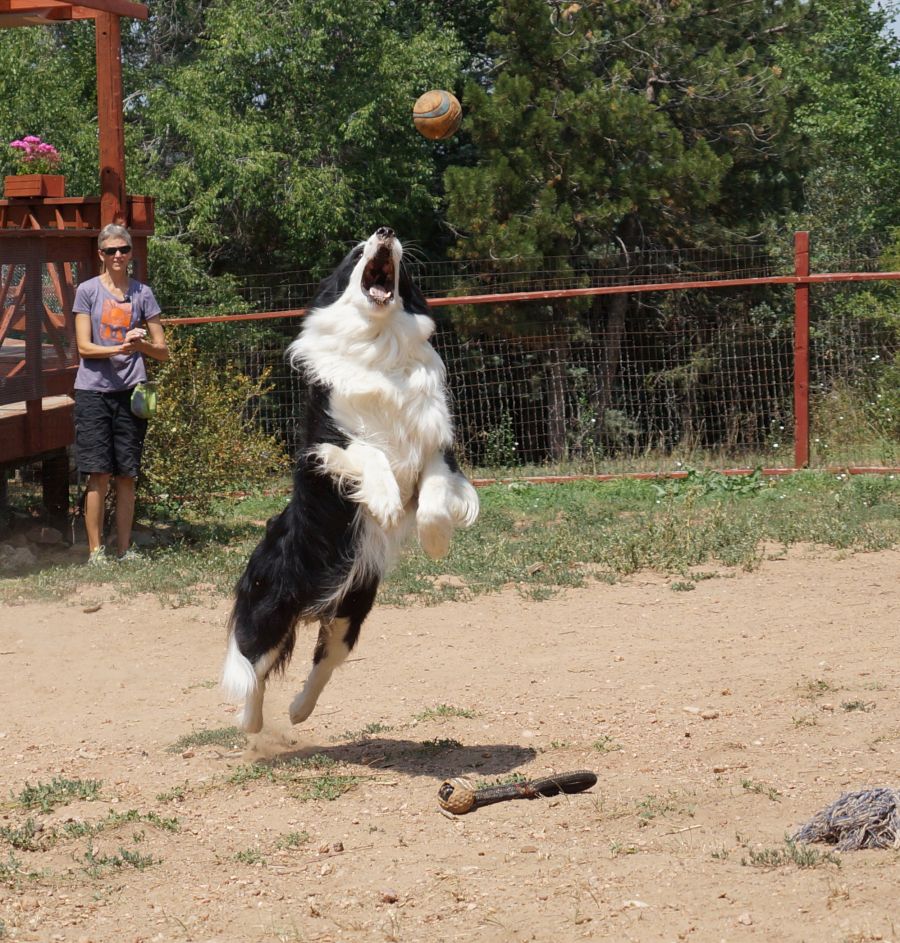
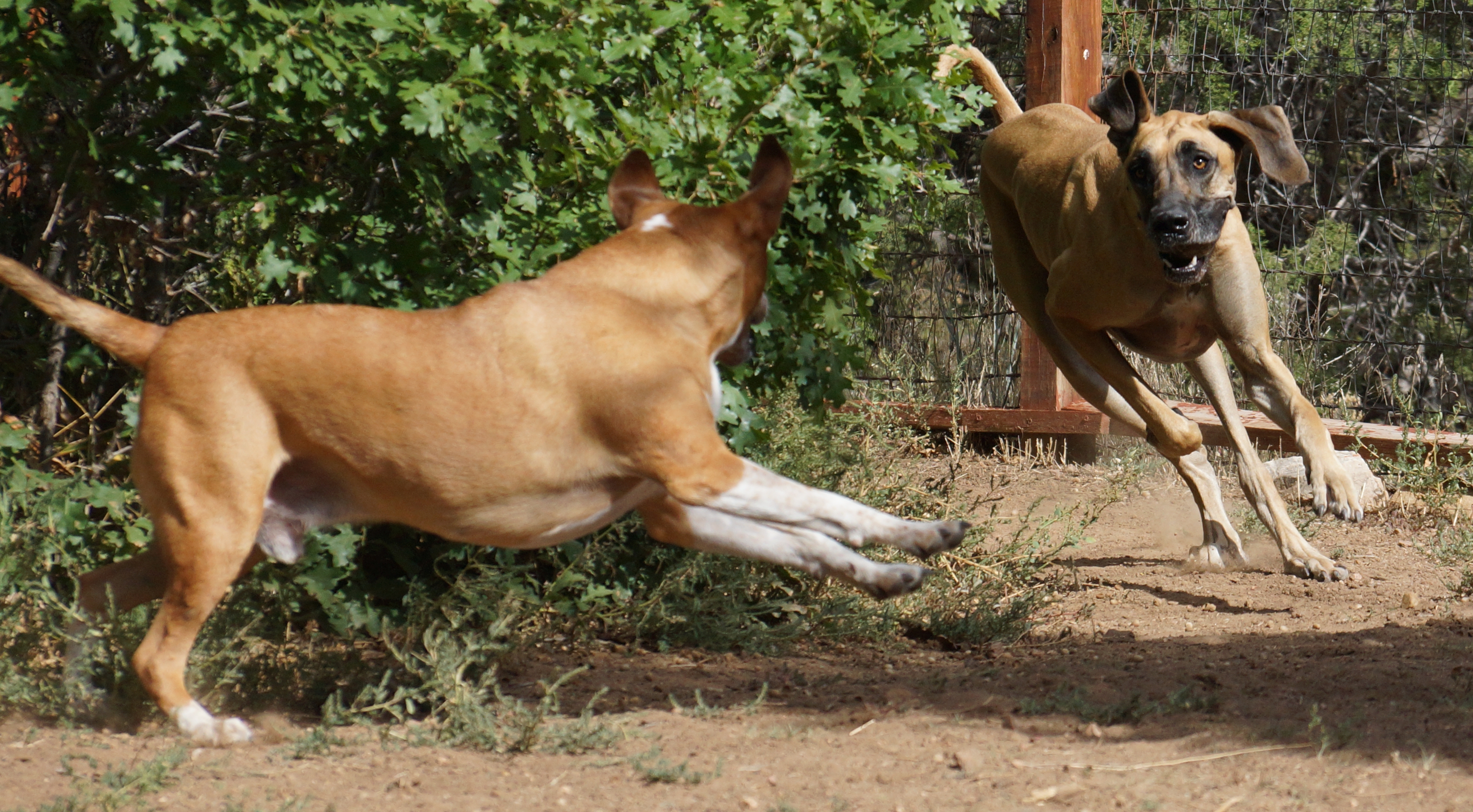
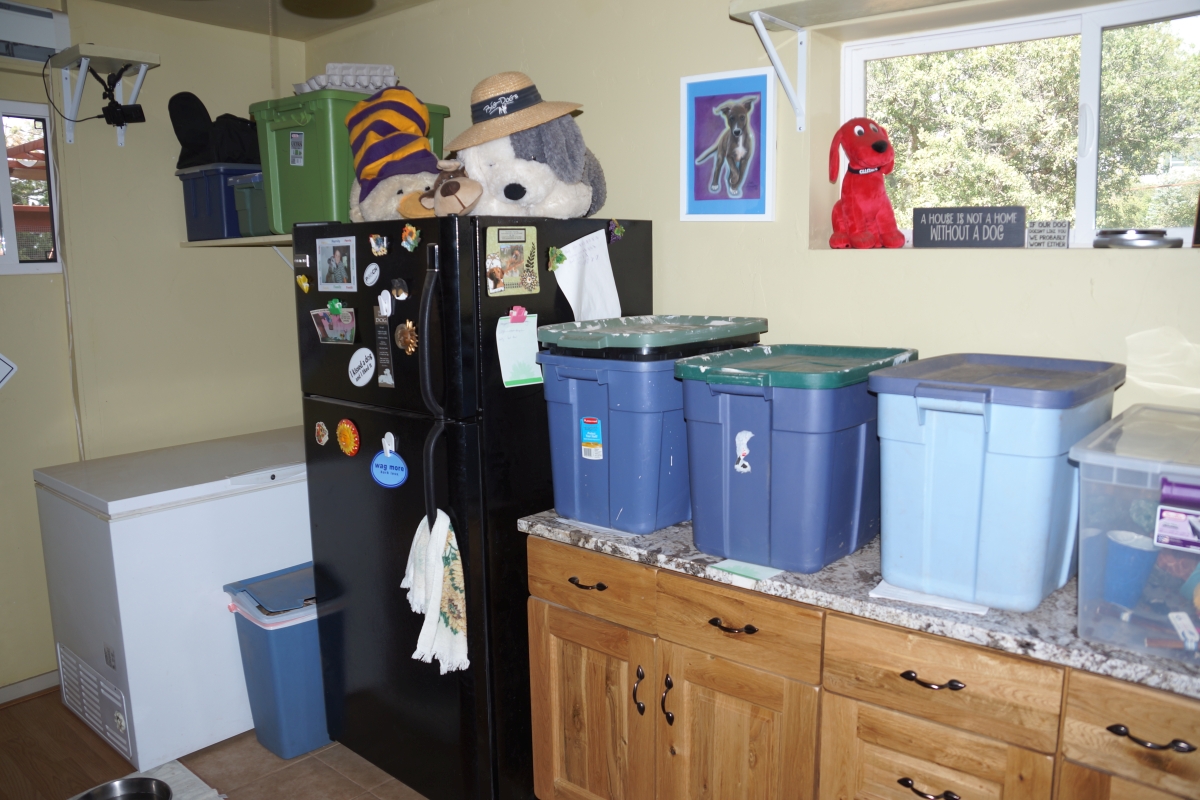
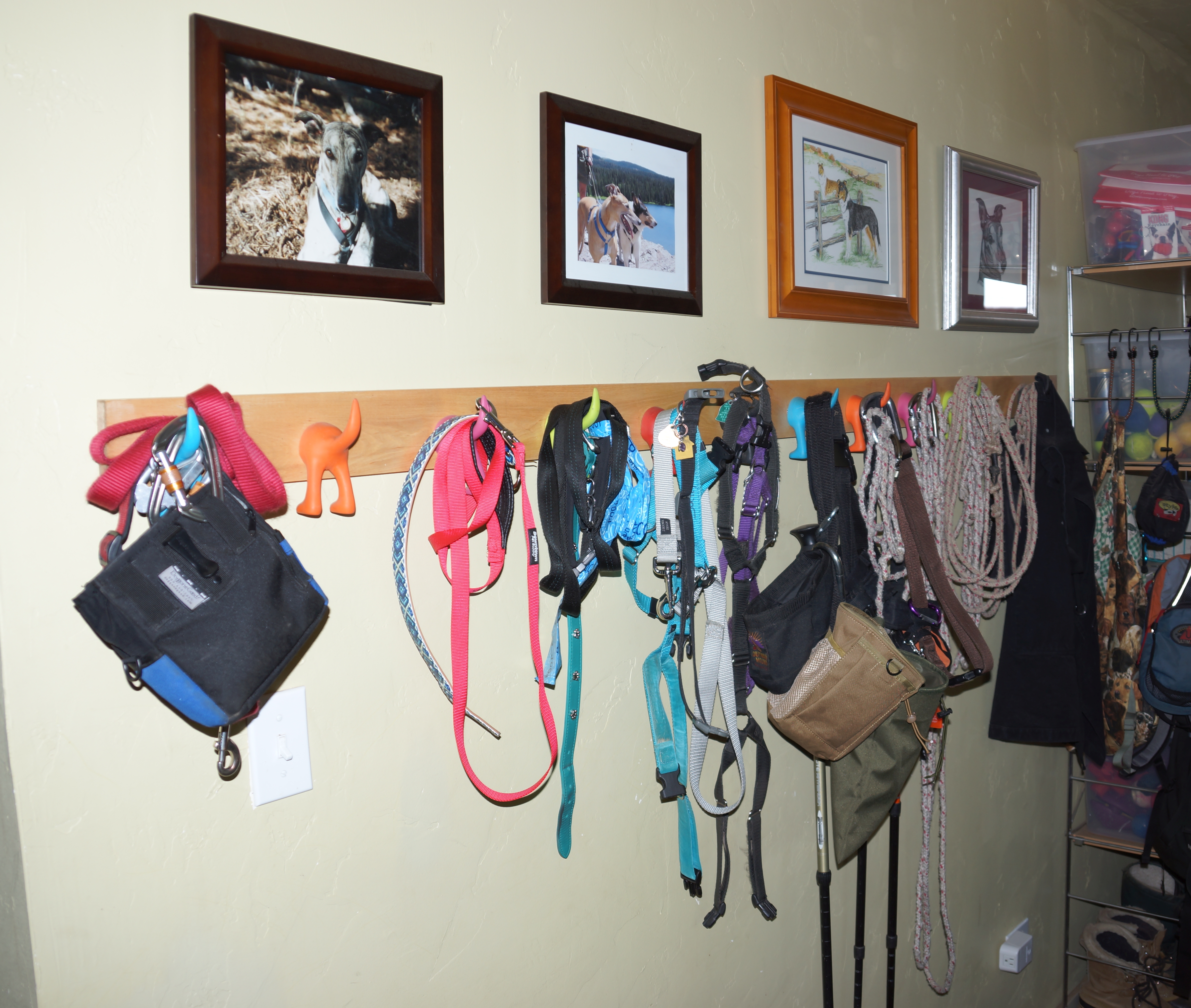

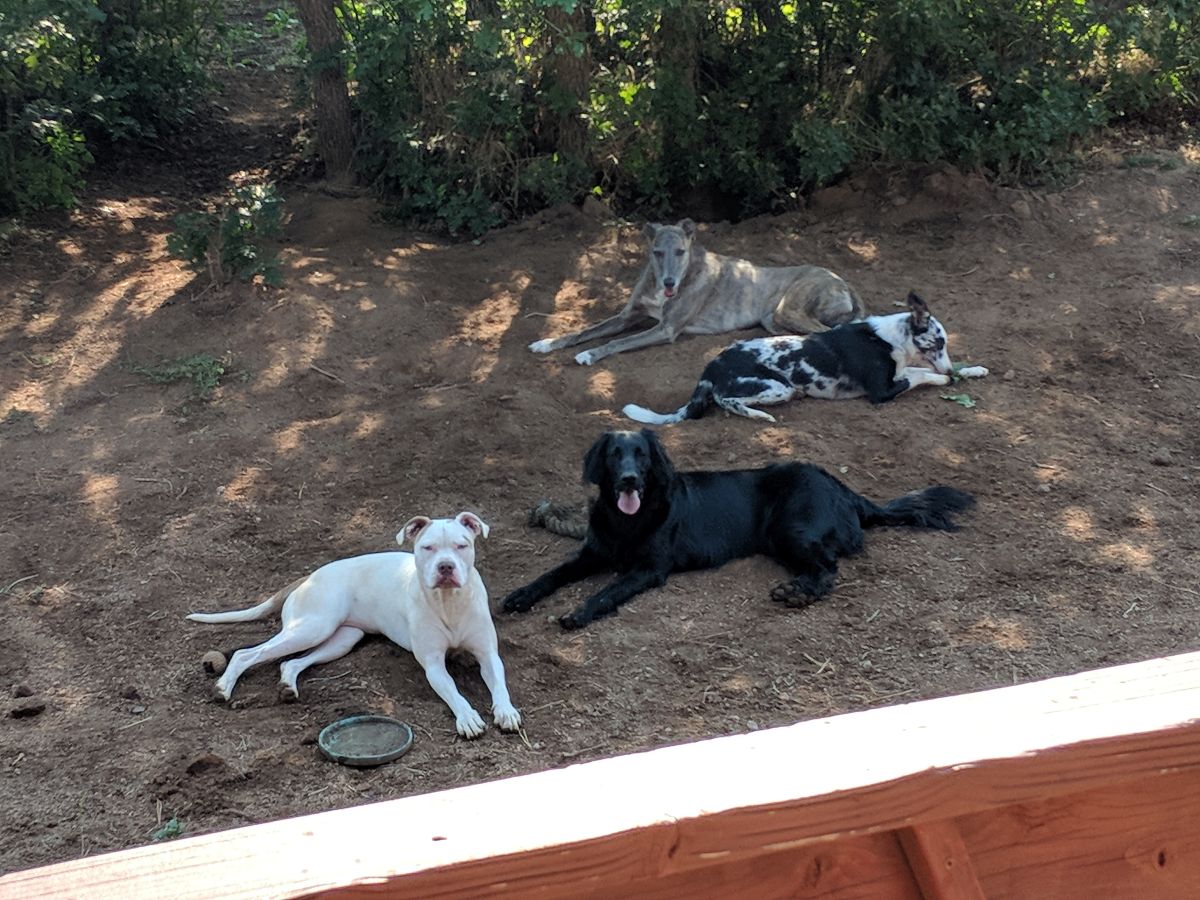
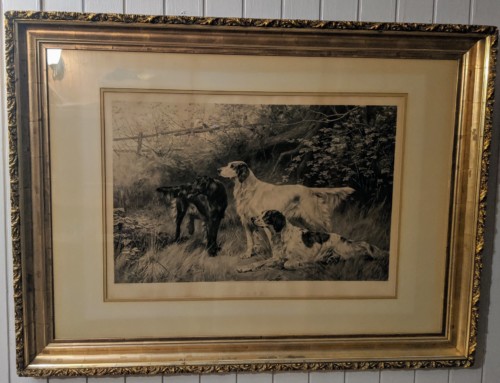
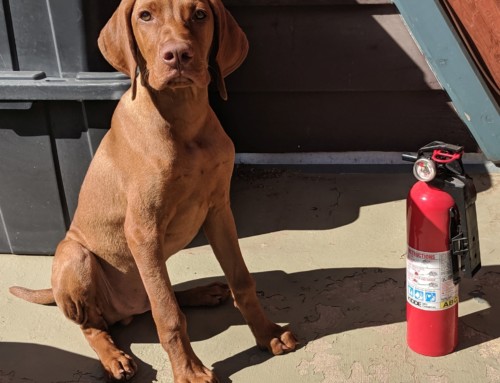
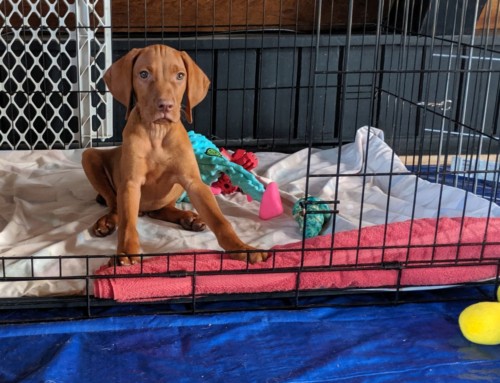
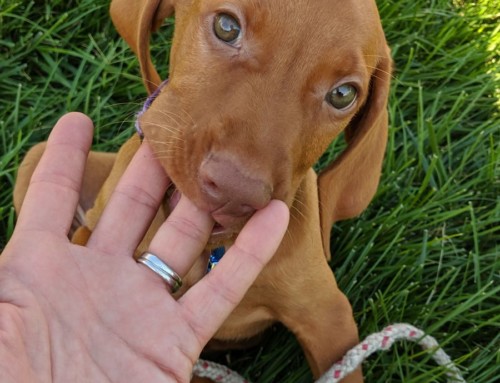
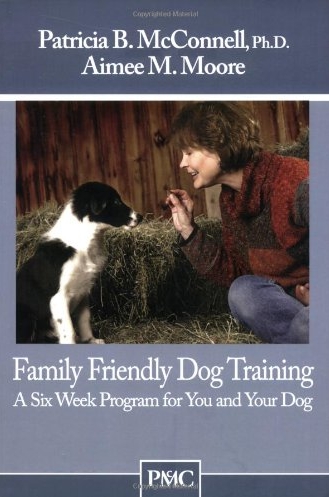
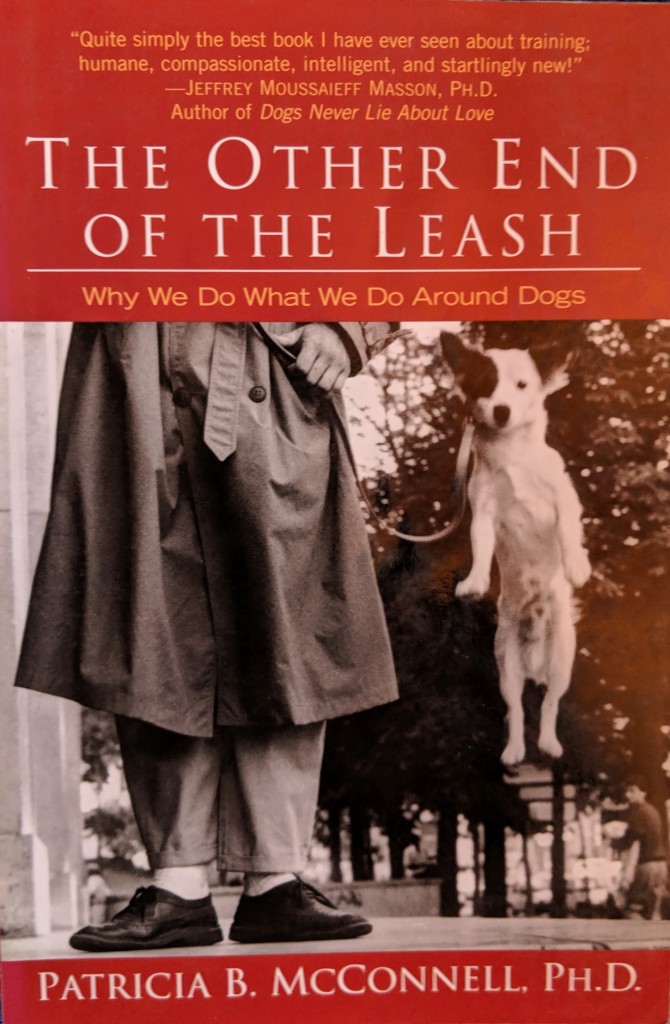
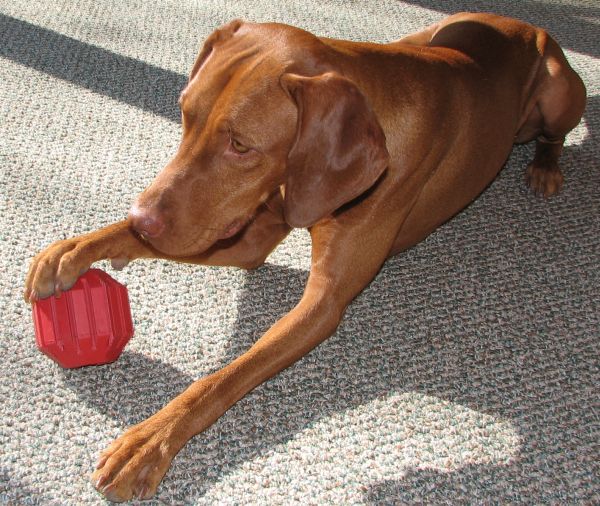
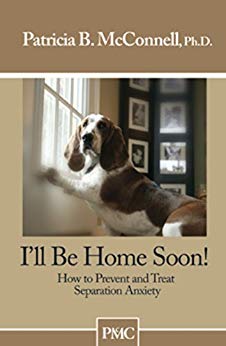
Leave A Comment